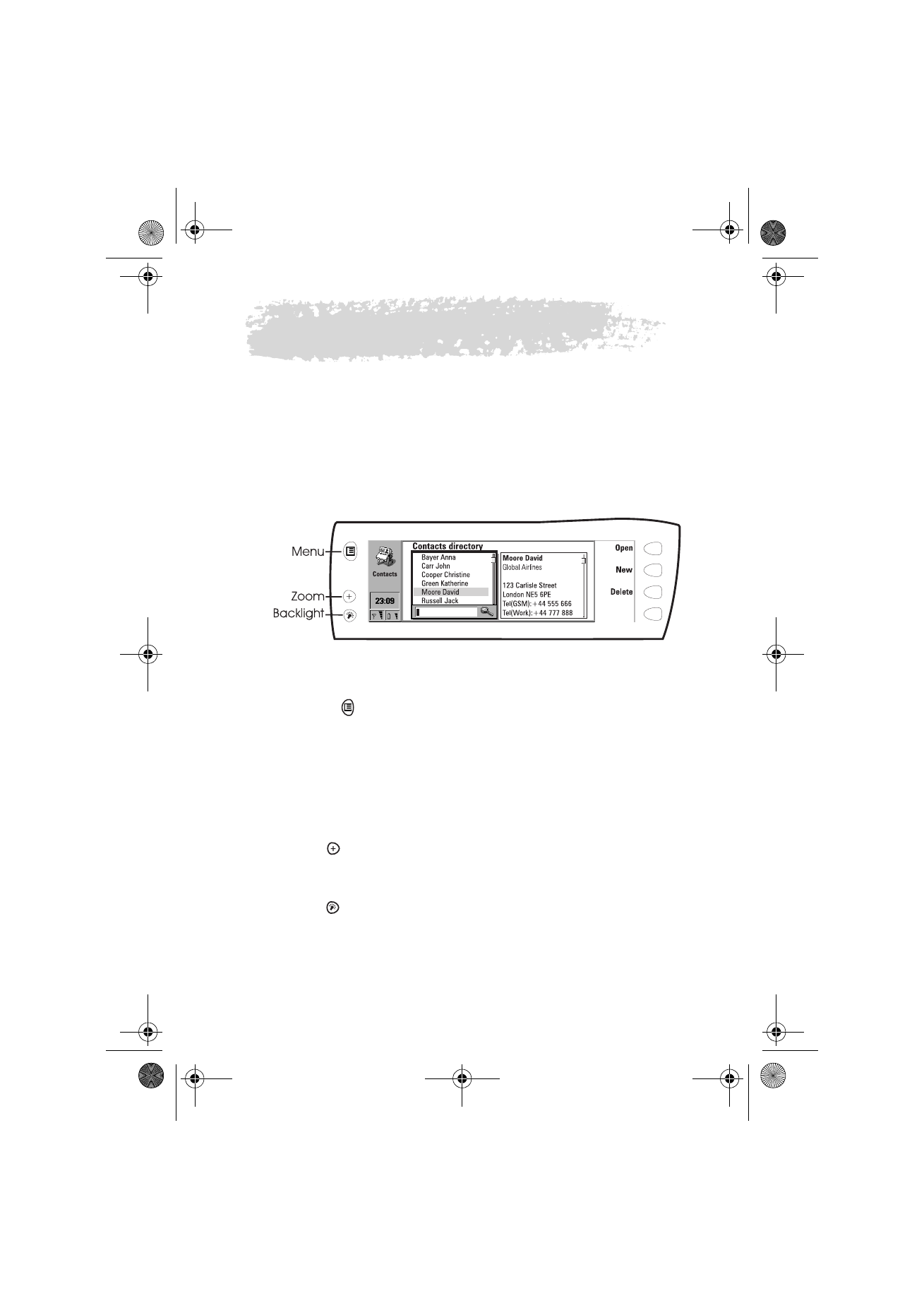
Battery
The Nokia 9110i Communicator is powered by a rechargeable Lithium-ion
battery. The High Power Battery provides 3 to 6 hours of talk/fax/terminal
time or 60 to 170 hours of standby time. Furthermore, up to 400 hours of
standby time may be achieved when the phone is off.
Use only batteries and accessories approved by the communicator
manufacturer for use with this particular communicator model. Use only
chargers approved by the communicator manufacturer for charging a
Lithium-ion battery.
Figure 10
Note: The communicator
can be used normally
during charging.
Um_spock3.bk Page 17 Thursday, June 1, 2000 10:11 AM

18
©2000 Nokia Mobile Phones. All rights reserved.
To charge a battery
1 Make sure that the battery is properly installed in the battery
compartment.
2 Connect the charger lead to the connector at the bottom of the
communicator, as shown in figure 11.
3 Connect the charger to an AC wall outlet. If the phone is switched on, the
CHARGING message appears on the display and the segments of the battery
indicator bar on the right side of the phone display will start scrolling.
4 When the battery is fully charged, the bars stop scrolling and four bars are
displayed. You may now remove the charger plug from the communicator.
When the charge in the battery is low and only a few minutes of operation
time remain, a warning tone will sound, and the message BATTERY IS LOW will
be repeated at regular intervals on the phone display. When the charge level
becomes too low for operation, the RECHARGE BATTERY message will be
displayed, accompanied by a warning tone. If you do not connect the
communicator to a charger, the communicator switches itself off.
Figure 11
Note: If the battery is fully discharged, it will
take 30 - 60 seconds before the CHARGING
message appears on the display and the battery
indicator bar starts scrolling. After that, it may
take 10-30 seconds before you can switch the
phone on.
Um_spock3.bk Page 18 Thursday, June 1, 2000 10:11 AM

19
©2000 Nokia Mobile Phones. All rights reserved.
To use the battery
Use only batteries approved by the communicator manufacturer and recharge
the battery only with the chargers approved by the manufacturer. With
approved chargers and accessories, the battery can be charged continuously.
The battery need not be fully discharged before recharging. When a charger is
not in use, disconnect it from the power source. Do not leave the battery
connected to a charger for longer than a week, since excessive charging may
shorten its life. If left unused, a fully charged battery will discharge itself over
time.
The battery can be charged and discharged hundreds of times, but it will
eventually wear out. When the operating time (talk-time and standby time) is
noticeably shorter than normal, it is time to buy a new battery.
Temperature extremes will affect the ability of your battery to charge: allow it
to cool down or warm up first.
Battery operation time is affected by the following: whether both the phone
and the communicator interface are on, radio signal strength, various phone
settings, the use of the backlight, and the length of the screen blanker period,
see ”System settings” on page 111.
It is recommended always to keep a charged battery in the communicator.
Keeping the battery charged maximises the lifetime of the backup battery
supplying power to the real-time clock of the communicator. In case the
backup battery is drained, it will be automatically charged the next time a
charged battery is reconnected to the communicator.
Always close the device cover before removing the battery. Closing the cover
will save all data.
Note
Use the battery only for its intended purpose.
Never use any charger or battery which is damaged or worn out.
Do not short-circuit the battery. Accidental short-circuiting can occur when a
metallic object (coin, clip or pen) causes direct connection of the + and -
terminals of the battery (metal strips at the bottom of the battery), for
example, when you carry a spare battery in your pocket or purse. Short-
circuiting the terminals may damage the battery or the connecting object.
Leaving the battery in hot or cold places, such as in a closed car in summer or
winter conditions, will reduce the capacity and lifetime of the battery. Always
try to keep the battery between +15°C (+59°F) and +25°C (+77°F). A
communicator with a hot or cold battery may temporarily not work, even
when the battery is fully charged. The performance of Lithium-ion batteries is
particularly limited in temperatures below 0°C (+32°F).
Do not dispose of batteries in a fire!
Batteries must be recycled or disposed of properly. Batteries must not
be disposed of in municipal waste.
Um_spock3.bk Page 19 Thursday, June 1, 2000 10:11 AM

20
©2000 Nokia Mobile Phones. All rights reserved.
Um_spock3.bk Page 20 Thursday, June 1, 2000 10:11 AM

21
©2000 Nokia Mobile Phones. All rights reserved.